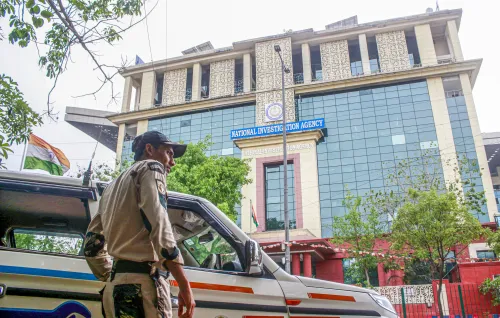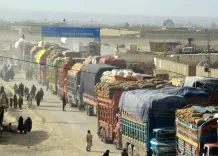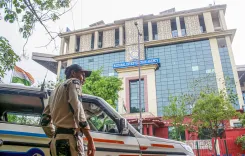Is Assam Really Reclaiming Its Tiger Kingdom?

Synopsis
Key Takeaways
- Assam is reclaiming its tiger territory through eviction drives.
- 2,000 families identified as encroachers in forest regions.
- Strong security measures are in place for the eviction.
- Human encroachments have harmed wildlife habitats.
- Assam’s forest department is expanding protected areas.
Guwahati, July 29 (NationPress) As Assam intensifies its series of high-profile eviction operations in forested areas, Chief Minister Himanta Biswa Sarma articulated this initiative as part of a larger conservation strategy aimed at safeguarding the state’s vibrant biodiversity—specifically its tiger population.
“Assam is not merely preserving tigers; it is reclaiming their territory,” the Chief Minister tweeted.
Emphasizing the state’s ecological importance, he remarked, “With the world's 3rd highest tiger density, enhanced reserves, and decisive actions against encroachment, the majestic tigers of Assam continue to roam with strength and dignity.”
This statement comes in the wake of a significant eviction operation in the Rengma Reserve Forest at Uriamghat, located within the Sarupathar sub-division of Golaghat district. Nearly 2,000 families have been identified as alleged encroachers, and officials stated that approximately 11,000 bighas of encroached land will be liberated.
The Golaghat district administration has orchestrated extensive security measures in the Rengma Reserve Forest, which borders Nagaland, to facilitate the eviction drive.
This encroached land has reportedly been transformed into betel nut plantations, allegedly linked to a larger “betel mafia” network, prompting vigorous administrative action following thorough land surveys conducted across 30 villages.
Authorities have mobilized a robust force of around 700 to 800 personnel from the Assam Police, Central Reserve Police Force (CRPF), and the Forest Department. Heavy machinery, such as bulldozers and excavators, has also been deployed to execute the eviction.
A significant portion of those facing eviction are Bengali-speaking Muslims, often labeled as illegal migrants from Bangladesh.
Reports indicate that many individuals have fled the area out of fear, seeking refuge in other regions of Assam. The government asserts that these settlements, which have converted forest lands into betel nut plantations, have disrupted wildlife corridors and contributed to habitat loss for endangered species, including the Bengal tiger.
In the meantime, Assam’s forest department has recently expanded protected areas and intensified monitoring in crucial reserves like Kaziranga, Manas, and Nameri.
Officials have stated that these initiatives, combined with persistent anti-poaching efforts and the removal of human encroachments, are aiding in the preservation of essential habitats and reversing the trend of diminishing wilderness.










